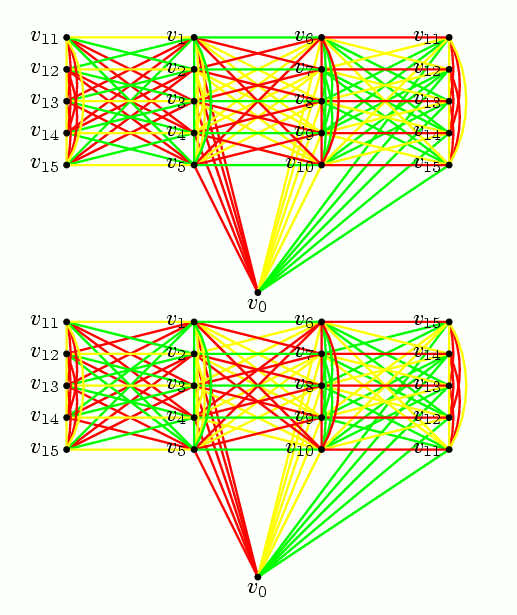
Computational Ramsey Theory
Department of Computer Science, RIT
Lead faculty:
Stanisław Radziszowski
room: 70-3657, phone: (585) 475-5193
email: spr@cs.rit.edu
url: http://www.cs.rit.edu/~spr
part of CS Theory Theme
Summary
Ramsey theory is often regarded as the study of how order emerges
from randomness. It has applications in parallel programming,
approximation algorithms, game theory, geometry, number theory,
and other areas of mathematics and theoretical computer science.
The central concept in Ramsey theory is that of arrowing.
For graphs F, G, and H, we say that F arrows (G,H)
if and only if for every coloring of the edges of F with
the colors red and blue, F contains a red G or a blue H.
The Ramsey number of graphs G and H is the smallest
n such that the complete graph on n vertices arrows (G,H).
There is very rich literature on Ramsey theory, starting
with the seminal paper by Frank Plumpton Ramsey in 1930.
The subject first concerned mathematical logic, but over
the years it found its way into several areas of mathematics,
computing, finance, economics and other fields. Ramsey theory
studies the conditions of when a combinatorial object necessarily
contains some smaller given objects. The role of Ramsey numbers
is to quantify some of the general existential theorems in
Ramsey theory. The Ramsey arrowing operator is a fundamental
predicate used to describe such relationships.
The determination of whether this arrowing holds is
notoriously difficult, and one has to deal with it in almost all
cases of Ramsey-type problems. The goal of our research is
to enhance known and develop new methods to decide if Ramsey
arrowing holds in a general or particular situation. If we succeed,
then we obtain new values or bounds on some concrete Ramsey
or Folkman numbers.
Links to some of our papers
-
Small Ramsey Numbers,
revision #16, January 2021, by Stanisław Radziszowski, a
dynamic survey of known values, bounds and computational results
on various types of Ramsey numbers at the
Electronic Journal of Combinatorics.
-
R(4,5) = 25 (pdf)
by Brendan D. McKay and Stanisław Radziszowski,
Journal of Graph Theory,
19 (1995) 309-322.
-
On Some Generalized Vertex Folkman Numbers,
(on arxiv),
by Zohair Raza Hassan, Yu Jiang, David Narváez,
Stanisław Radziszowski and Xiaodong Xu,
Graphs and Cominatorics, 39 (2023), paper no. 62.
DOI 10.1007/s00373-023-02654-8.
-
On Some Open Questions for Ramsey and Folkman Numbers,
by Stanisław Radziszowski and Xiaodong Xu,
a short survey of selected problems, in
Graph Theory, Favorite Conjectures and Open Problems,
Vol. 1, edited by Ralucca Gera, Stephen Hedetniemi and Craig Larson,
Problem Books in Mathematics, Springer 2016, 43-62.
-
On the Most Wanted Folkman Graph,
by Stanisław Radziszowski and Xiaodong Xu, Geombinatorics,
Vol. XVI (4) (2007) 367-381, which describes the quest for the smallest K4-free graph
which is not a union of two triangle-free graphs.
-
All other
Ramsey theory papers co-authored by Stanisław Radziszowski.
Links to general information

